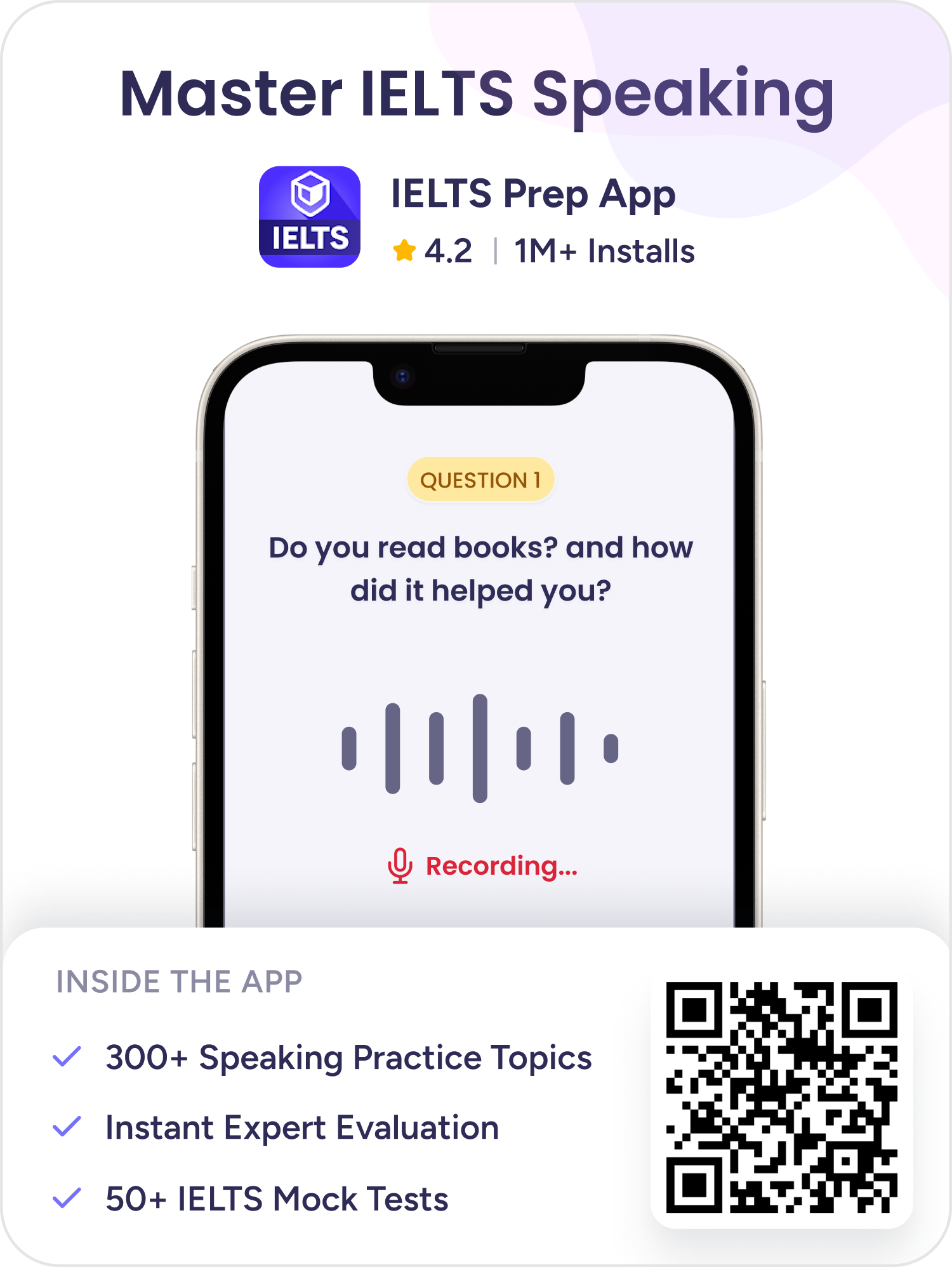Describe A New Store Shop In Your Town City: IELTS Speaking Cue Card
You should say
- Who this person is?
- When did you study/work with this person?
- What did you do together?
- What did you do to become successful?
- Explain how you felt about studying or working with this person.
27 unique answers with expert feedback
Band 6-7
00:00
/
00:00
Follow up questions
Follow up questions
What do you think makes Aastha Medicals unique compared to traditional pharmacies?
How do you think this new concept will affect the pharmacy industry in your area?
What challenges do you think your friend might face with this new store?
Band 6-7
00:00
/
00:00
Follow up questions
Follow up questions
What do you think makes Trader Joe's different from other grocery stores?
How important is customer service in a store like Trader Joe's?
What types of products do you usually buy from Trader Joe's?
Band 6-7
00:00
/
00:00
Follow up questions
Follow up questions
What do you think makes a store successful in your town?
How do you feel about the trend of small businesses growing into larger ones?
What role do you think aesthetics play in attracting customers to a store?
Practice other cue cards
Band 6-7
00:00
/
00:00
Follow up questions
Follow up questions
What do you think makes this store unique compared to others?
How do you think the opening of this store affects the local community?
Would you recommend this store to others? Why or why not?
Band 5-6
00:00
/
00:00
Follow up questions
Follow up questions
What challenges did Swetha face when starting her store?
How did social media impact the success of her store?
What future plans does Swetha have for her store?
Cue 1:Who this person is?
- Introduce the new store by mentioning its name and type, such as a clothing store, grocery store, or electronics shop.
- Share a brief background about the store, including its owner or the concept behind it.
Example
The new store I want to talk about is called 'Trendy Threads', a clothing boutique that opened recently in my town. The owner, a young entrepreneur named Priya, has a passion for fashion and wanted to create a space that offers stylish yet affordable clothing for young adults.
Cue 2:When did you visit this store?
- Mention the time frame when you first visited the store, such as the opening day or a specific month.
- Describe the atmosphere during your visit, including any special events or promotions.
Example
I visited Trendy Threads on its opening day last month. The atmosphere was buzzing with excitement, as there were decorations, music, and even a small fashion show to showcase the new collection.
Cue 3:What did you buy there?
- Talk about the items you purchased and why you chose them.
- Explain how the products met your needs or preferences.
Example
I bought a couple of trendy tops and a pair of jeans. I chose these items because they were not only stylish but also comfortable, perfect for my casual outings with friends.
Cue 4:What did you think about the store?
- Share your overall impression of the store, including the layout, customer service, and product variety.
- Mention any unique features that stood out to you.
Example
I was really impressed with the layout of the store; it was spacious and well-organized. The staff were friendly and helpful, which made my shopping experience enjoyable. I also loved the unique collection of accessories they offered, which complemented the clothing perfectly.
Cue 5:Explain how you felt about this store.
- Express your feelings about the store and whether you would recommend it to others.
- Mention any plans to return or explore more of their offerings.
Example
I felt really happy about discovering Trendy Threads. It’s refreshing to have a local store that caters to our fashion needs. I would definitely recommend it to my friends, and I plan to return soon to check out their new arrivals.
Conclusion
Example
In conclusion, Trendy Threads has quickly become one of my favorite shopping spots in town. It not only offers great fashion choices but also supports local entrepreneurship, which I truly admire.
Following this structure will ensure you cover all the essential points while providing a clear and engaging response to the cue card topic.
Tips to answer this Cue Card
1: Lack of Specific Details
Avoid vague descriptions of the store. Providing specific details about the store's location, products, and atmosphere makes your answer more engaging and informative.
Tip
Include specific examples, such as the types of products sold or unique features of the store, to create a vivid picture for the listener.
2: Ignoring Personal Experience
Failing to share your personal experience with the store can make your response less relatable. Personal anecdotes help to connect with the examiner.
Tip
Share a memorable experience you had at the store, such as a purchase or interaction, to make your answer more personal and engaging.
Overly Simple Language
Using overly simple language can limit your score. It's important to demonstrate a range of vocabulary and grammatical structures.
Tip
Practice using varied vocabulary and complex sentences to express your thoughts, which will show your language proficiency.
IELTS Cue Cards asked last week
Reported by Leap students who gave IELTS
All Answers
Here are all the answers by real-users practicing speaking for IELTS Cue Cards on our IELTS Prep App.
Band 6-7
Band 6-7
Band 6-7
Band 6-7
Band 6
Band 6
Band 6
Band 6
Band 6
Band 6

Explore
473 Cue Cards

Personal Experience
121 Cue Cards

Describing People
66 Cue Cards

Travel
47 Cue Cards

Personal Development
45 Cue Cards

Hobbies/Interests
44 Cue Cards
Environment/Culture
39 Cue Cards

Tech/Media
27 Cue Cards

Education/Work
19 Cue Cards

Social Issues
19 Cue Cards

Describe An Object
16 Cue Cards
Business/Shopping
16 Cue Cards

Food/Cooking
8 Cue Cards
Fashion
6 Cue Cards
Get the IELTS Prep App
4.2
1M+ Installs
Get the IELTS Prep App
4.2
1M+ Installs
Get the app link on your phone
Or download app from





